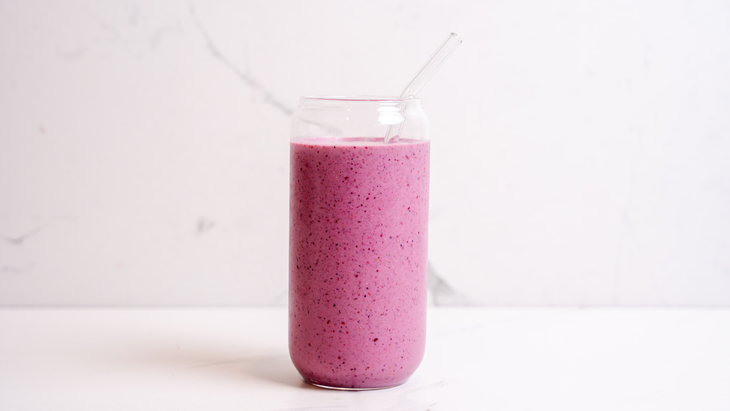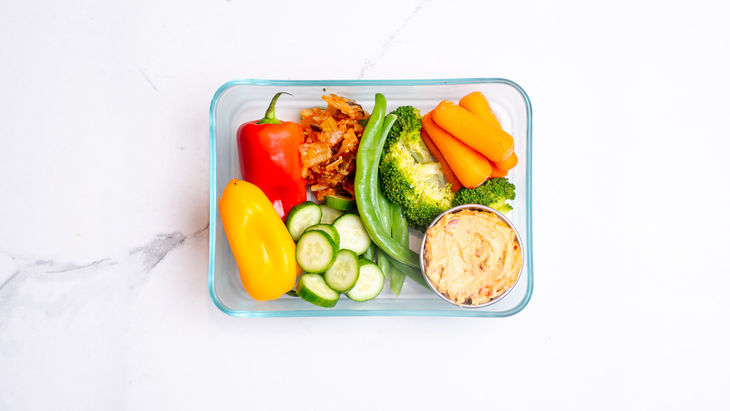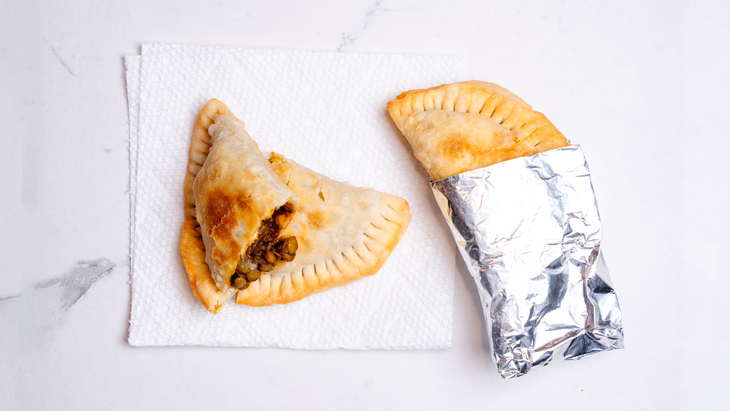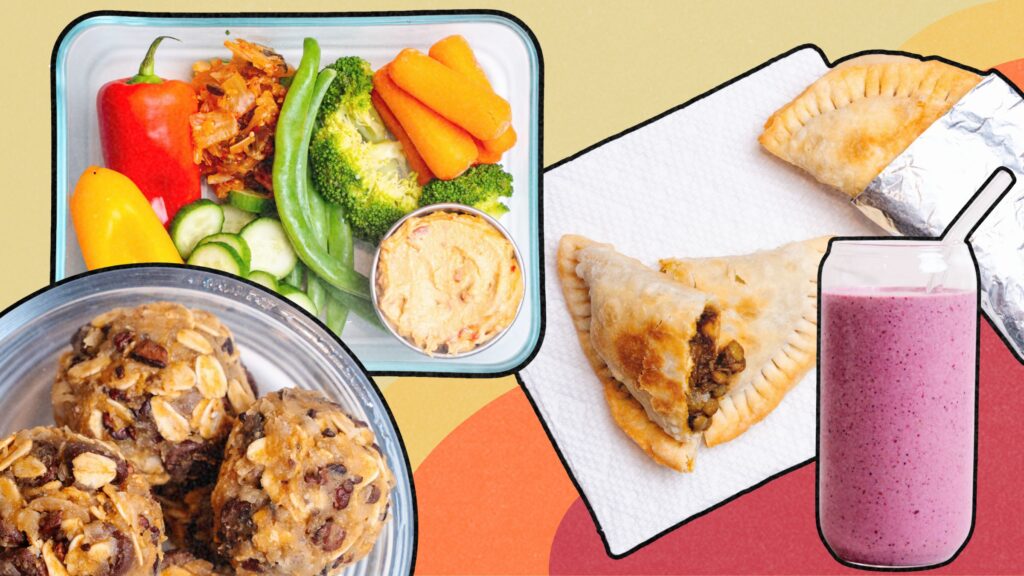If you buy through our links, we may earn an affiliate commission. This supports our mission to get more people active and outside.Learn about Outside Online’s affiliate link policy
Most people aren’t getting enough of this key nutrient
(Photo: Recipes: Ashia Aubourg; Design: Ayana Underwood)
Published August 16, 2025 06:17AM
When I began my career reporting on nutrition, nobody could’ve prepared me for how many high-protein stories I’d end up writing. It seemed like everywhere I turned, whether it was an influencer on TikTok or newly released scientific research, the health world’s biggest recommendation was to load up our plates with protein-dense foods. While we need protein, fiber should get just as much of the spotlight.
I interviewed nutrition experts to learn why fiber is essential for overall health—and get their thoughts on some high-fiber recipes.
Fiber Keeps Glucose Levels in Check and Supports Gut Health
Fiber is a carb, and there are two types: soluble and insoluble. Soluble fiber dissolves in water and, according to most studies, helps lower your glucose levels and cholesterol, says Rhyan Geiger, a registered dietitian based in Phoenix, Arizona. Insoluble fiber, on the other hand, is the “roughage” found in plant-based foods that supports healthy digestion and bowel movements, she explains.
“You’ll find soluble fiber in foods like oats, lentils, apples, berries, and flaxseeds,” says Kerri Louati, a registered dietitian based in Fort Lauderdale, Florida. “Insoluble fiber is especially abundant in foods like leafy greens, carrots, whole grains, nuts, and seeds.”
Why Aren’t People Eating Enough Fiber?
According to the United States Department of Agriculture, most people eat only about half the recommended amount daily. There are a few reasons for this. One is accessibility—many Americans have greater access to processed foods, which tend to be more affordable and widely available than whole foods like fruits and vegetables, Louati says.
Another major factor is awareness: some people just don’t know which foods are high in fiber or how much they’re supposed to eat, she says. So if high-fiber foods aren’t easily visible or available, they’re often left off the plate.
How Much Fiber Should You Eat in a Day?
Rather than focusing on one type over the other, the goal is to eat a balance of both. That’s why, when it comes to the recommended daily intake, both insoluble and soluble fiber are lumped together, Geiger says.
According to the Centers for Disease Control and Prevention, adults should get between 22 and 34 grams of fiber per day.
4 Delicious High-Fiber Snack Recipes, Approved By Nutritionists
Geiger says that adding plant-based meals to your diet is a great way to meet your fiber intake goals. I kept that in mind while searching for recipes to try. After I made them and tried them for myself, I asked my experts if these recipes got the green light. Spoiler: they did.
Plus, these snacks are super easy to make and carry, so you’ll definitely want to bring them with you on your next outdoor adventure.
1. Berry Booster Smoothie
I came across a vibrant pink, fiber-rich smoothie recipe from @fiberchina that looked delicious.

Ingredients:
- 1 cup unsweetened almond milk
- 1 cup frozen mixed berries
- ½ cup plain Greek yogurt
- 1 tablespoon chia seeds
- 1 tablespoon hulled hemp seeds
- 1 pitted date
- A pinch of cinnamon powder
Recipe:
- Add each of the ingredients to a blender.
- Blend until smooth.
This recipe delivers a two-cup serving of smoothie and provides nearly 12 grams of fiber. (Follow along with me as I make this delectable smoothie in the video below.)
“Seeds are a fiber-rich food,” says Yvette Hill, a registered dietitian based in Boulder, Colorado. Chia seeds, hemp seeds, and even the tiny seeds in berries contribute a solid fiber boost, plus the addition of dates helps bump up your intake even more.
If you want an added fiber boost, Louati recommends using frozen raspberries as your berry base. Just one cup has over 11 grams of both soluble and insoluble fiber. So if you swapped out the mixed berries for raspberries, this recipe would deliver about 17 grams of fiber.
The Verdict: Filling, Creamy, and Naturally Sweet
This recipe doesn’t include any added sweeteners, so I was a little hesitant about the flavor at first. But after spending a few minutes blending it up and taking a sip, my doubts disappeared. The date and berries added a honey-like sweetness, and the texture came out creamy. I packed it in an insulated water bottle to keep it cold and sipped it as I powered through my hike.
2. No-Bake Chocolate Peanut Butter Bites
I love any kind of sweet treat that comes in miniature form. So when I came across a TikTok recipe for fiber-rich no-bake chocolate peanut butter balls by @abyssiniawellness, I was all in. The video didn’t include exact measurements, but I got the gist of her recipe. (This recipe yields about ten bites.)

Ingredients
- 1 cup rolled oats
- ¼ cup coconut flakes
- ¼ cup ground flaxseeds
- ½ cup dark chocolate chips
- ½ cup smooth peanut butter
- 2 tablespoons maple syrup
- 2 tablespoons cacao nibs
- 1 scoop vanilla protein powder
Recipe
- Combine all of the ingredients in a medium bowl.
- Using a spoon, mix all of the ingredients.
- Scoop about ten portions of the mixture and roll each one into a ball.
“Oats are rich in soluble fiber,” says Louati. “Flaxseeds are another fiber powerhouse, offering nearly four grams of mostly soluble fiber per tablespoon.” While the small amounts of coconut flakes and cacao nibs aren’t particularly high in fiber, they still add about five grams in total to the whole recipe and bring great texture to these bites.
Each chocolate peanut butter ball offers about four grams of fiber, and snacking on a few throughout the day can satisfy your sweet tooth and help you get closer to your daily fiber goals.
The Verdict: Chewy and Irresistible
These no-bake chocolate peanut butter bites took less than ten minutes to mix and roll. From there, you can let them firm up in the fridge, or, if you’re impatient like me, dig right in. I loved the chewy texture and cocoa-nutty flavor. I packed a few in a container, and whenever I needed a quick snack during my hike, they were easy to grab and surprisingly filling.
3. Crudités to Go
Recently, while hosting family, I planned a mountain trail outing for all of us. To get everyone ready, I packed a variety of snacks, including crudités (which, in French, means raw vegetables).
I found the recipe in The New York Times, and what I appreciate about this crudités idea is that it’s more of a guide than a strict formula, letting you mix and match based on what you have. For a personal-sized version with nearly 16 grams of fiber, I recommend filling a container with a range of veggies and add-ins.

Ingredients:
- ½ cup baby carrots
- 2 small sweet peppers (whole)
- ½ cup cucumbers (sliced)
- ½ cup steamed broccoli
- ½ cup green beans
- ¼ cup kimchi
- ½ cup hummus
Recipe:
- Place all of the washed and steamed vegetables in a container.
- Then, add the sides like kimchi and hummus to the same container.
“A crudités platter is a beautiful and practical way to load up on fiber-packed vegetables,” says Louati. “Not only does it offer a vibrant display of colorful, nutrient-rich foods, but staples like broccoli, carrots, and kimchi deliver a generous dose of fiber.”
The Verdict: Refreshing and Satisfying
Getting more than half of the recommended daily fiber from a snack is always a huge perk in my book. Beyond the 15 grams of fiber in this personal crudités plate, I appreciated its light and refreshing taste. During a break on my hike, munching on crisp cucumbers and dipping cold carrots into cool hummus made for the ideal recharge. I also loved being able to use up leftover veggies from my fridge before they went to waste.
(Pro tip: pack everything in an insulated food container to keep everything chilled.)
4. Lentil Pastelitos
Pastelitos, or empanadas, are one of my favorite ways to sneak in veggies or legumes. So when I found this recipe from Fab Everyday, which fills flaky dough with a Puerto Rican-style lentil mixture, I was sold before I even tried it.
To make these pastelitos, use pre-made empanada dough to save time—or make your own using this recipe, which I’ve tested and am a fan of.

Ingredients:
- 1 tablespoon olive oil
- 1 (15-ounce) can lentils, drained and rinsed
- ¼ cup sofrito
- 3 cloves garlic (minced)
- ½ teaspoon dried oregano
- ½ teaspoon salt
- ¼ teaspoon ground black pepper
- 1 cup of cooked potatoes (diced)
- 1 (8-ounce) can tomato sauce
- ½ cup sliced pimento-stuffed green olives
- 2 cups avocado oil for frying, or as needed
- 16 pieces of empanada dough discs
Recipe:
- In a pot over medium heat, combine one 15-ounce can of lentils (drained and rinsed), one-fourth cup of sofrito, three minced garlic cloves, half a teaspoon of oregano, half a teaspoon of salt, and one-fourth teaspoon of black pepper.
- Sauté everything for about four minutes. Then stir in one cup of parboiled diced potatoes, one cup of tomato sauce, and half a cup of sliced pimento-stuffed green olives. Cook the mixture for another five minutes, then remove it from the heat and let the filling cool.
- Heat about two inches of avocado oil in a frying pan. While the oil heats, place the empanada dough discs on a clean, lightly floured surface. Spoon about half of a cup of the lentil mixture onto one half of each disc in a half-moon shape. Fold the dough over the filling, pinch the edges to seal, and crimp with a fork. Repeat with the remaining dough discs and filling.
- Using a thermometer, once the oil reaches 350°F, add the empanadas in a single layer, being careful not to overlap them. Fry the pastelitos until they turn golden brown on both sides.
“Empanadas aren’t usually thought of as a fiber-rich meal, but adding lentils changes that completely,” says Louati. “Lentils and other legumes are excellent ways to boost fiber.” The amount of fiber in 16 of these pastelitos is approximately 83 grams, and each empanada contains about 5 grams of fiber. If you have two or three of these, you’ll get between 10 and 15 grams of fiber.
The Verdict: I’m Obsessed.
I fried up a batch of these empanadas, wrapped them in aluminum foil, and brought them along on one of my favorite trails. Since it was around lunchtime, I found a comfy picnic table before starting the hike, ate about two pastelitos, and then set off. These handhelds weren’t just flavorful—I loved the aromatic sofrito, the savoriness of the tender lentils, and the buttery, flaky dough—they were also surprisingly filling. I managed to complete a three-hour walk, sipping water the whole time, without any sudden hunger pangs creeping in.
After digging into a bunch of fiber-rich recipes (and testing them outdoors!), I’ve found that loading up on this carb can be simple, satisfying, and pretty delicious, especially when you let plant-based ingredients take center stage. If you’ve been stuck in a wellness rut and are looking for small ways to nourish yourself, these recipes pack in the flavor and will help cement fiber into your daily routine.
Want more Outside health stories? Sign up for the Bodywork newsletter.
Ashia Aubourg is a freelance food writer. She has years of experience working in kitchens, non-profits, tech companies, and farms. Ashia’s writing appears in Eater, The Kitchn, Cuisine Noir, Food & Wine, America’s Test Kitchen, Food52, and more. Before becoming a journalist, she completed her Bachelor of Science in Food Studies and Policy Studies from Syracuse University. Her hands-on background and fascinations involve outdoor cooking, foraging, and stewarding gardens.


